A Comparison of Live Feeder Insects
Many amphibians, arachnids and reptiles need insects as part of a balanced diet.
As an owner or keeper, you're probably aware that your pet's diet includes insects, but have you considered the nutrients each of the different insects offer?
In the wild, the variety of insects in an animal's diet provides all their nutritional requirements; however, quantity can be inadequate. Whereas, in captive diets this issue is reversed, food is readily available but diversity is limited.
When you know the nutritional profiles of different insect types, meeting your pet's individual dietary needs is more manageable.
Before visiting the nutritional chart of live feeder insects (below), you should consider the nutrients your pet needs and why they are important.
Important Nutrients
The main nutrients to consider are:
-
Protein
Protein is a crucial nutrient for building muscle, maintaining a healthy weight, reducing muscle loss and providing energy. High protein insects may also help with the recovery of ill or injured animals. The amount of protein needed varies depending on age, growth, sex, species and other factors.
-
Fat
Although fats are essential for a range of functions (including helping maintain body temperature and providing fat stores during brumation and/or breeding season), high-fat diets are widely accepted as being unhealthy.
A high-fat diet can contribute to obesity, especially as captive animals typically get less exercise than their wild counterparts. As you would expect, animals that are mostly inactive should consume much lower amounts of fat in their diet than animals with higher activity levels.
-
Fibre
When fed too often or in excess, fibre can cause digestive issues. Typically the amount of fibre in live insects is very low, with chitin (exoskeleton) largely contributing to their fibre content.
-
Ash
Ash accounts for everything not mentioned above e.g. what’s left after removing protein, fat and fibre; and generally comprises salts, minerals and metals.
Other important considerations in your pet's diet:
-
Ca:P
The ideal calcium to phosphorus (Ca:P) ratio falls somewhere between
1.5 : 1 and 2 : 1.
Understanding how to provide an appropriate and balanced intake of calcium and phosphorus in your pet’s diet is critical to their ongoing health and wellbeing.
When your pet does not get enough calcium, the needed calcium is drawn from your pet’s bones (and other stores), leading to serious health issues over time, including Metabolic Bone Disease (MDB).
Most feeder insects do not have adequate calcium to phosphorus ratio, creating a need for dietary supplements to address this natural imbalance.
-
Water
All animals need water to function properly and survive. Without water, your pet can become dehydrated and malnourished.
Generally, most of the moisture will come from your pet’s diet rather than from drinking water, especially when offered live insects with high moisture content. Omnivores also receive water through other food sources such as fruit, plants and vegetables.
Nutritional Values of Feeder Insects
The following Live Feeder Insect Nutritional Chart outlines the nutritional values of some common live feeder insects, including moisture, protein, fat and Ca:P (calcium to phosphorus ratio).
| Insect |
Moisture % |
Protein % (DMb) |
Fat % (DMb) |
Ca:P |
| BSFL |
62 |
17
|
11 (29) |
1.5 : 1 |
|
Crickets |
71 |
19
|
6 (23) |
1 : 8 |
|
Earthworms |
81 |
11
|
2.5 (11) |
1.5 : 1 |
|
Fly Pupae |
71 |
20
|
2 (8) |
1 : 2.5 |
|
Giant Mealworms Zophobas morio |
61 |
20
|
17 (40) |
1 : 18 |
|
Hornworms |
85 |
9
|
3 | 1 : 3 |
|
Mealworms Tenebrio molitor |
62 |
16
|
12 (35) |
1 : 7 |
|
Silkworms |
79 |
13
|
9 (36) |
1 : 2.5 |
|
Waxworms |
60 |
15
|
24 (59) |
1 : 7 |
|
Wood Roaches |
55 |
23
|
7 (16) |
1 : 3 |
*DMb = Dry Matter basis
The data in the Live Feeder Insect Nutritional Chart is represented on an “as fed” basis (with dry matter values included inside brackets), collected from various sources and averaged, then rounded to the nearest percent for simplicity.
Please note: the differing practices of cultivating live feeder insects can impact their nutritional value; as such, the information provided should be used as a guide only.
AS FED -vs- DRY MATTER
There are two ways nutritional value is measured: "as fed" and "dry matter".
Nutritional values represented as fed include the moisture content; whereas, dry matter expresses the nutritional values excluding moisture, i.e. after it has been dried out.
Although as fed accurately represents live feeder insects overall, it does not provide a reliable comparison of all available nutrients, especially non-water components. This is because the nutrients are associated with the dry matter, e.g. the more moisture content increases, the values of other nutrients will decrease. And moisture content can vary from one insect to another. As such, it is more reliable to assess nutrients on a dry matter basis.
Where nutrition is expressed on an as fed basis, some insects may seem to offer little nutritional value. However, when converted to dry matter, the values demonstrate higher-quality. That is why it is important to be aware of both values.
Summary of Live Feeder Nutritional Information
BSFL
- average moisture
- low protein
- average fat
- excellent Ca:P
Black Soldier Fly Larvae (BSFL) is increasing in popularity as a feeder insect for a few reasons, mainly the high calcium content and favourable calcium to phosphorus (Ca:P) ratio. In terms of other nutrition, BSFL offers lower protein and average fat when compared to other feeder insects.
CRICKETS
- high moisture
- great source of protein
- average fat
- poor Ca:P
Crickets are a popular live feeder insect for many pets. They offer good protein and reasonable fat. The Ca:P ratio is poor, however as dusting insects with calcium supplements is a common practice, this is unlikely to be an issue. They are also readily accepted by most amphibians, arachnids and reptiles.
EARTHWORMS
- very high moisture
- average protein
- low fat
- excellent Ca:P
Earthworms are a good source of calcium and moisture, while being low in fat but they are generally less palpable than other feeder insects. It is still recommended to offer them occasionally to include variety in your pet’s diet.
FLY PUPAE
- high moisture
- rich in protein
- low fat
- reasonable Ca:P
Although many animals are not drawn to fly pupae because of their lack of movement, they are a great source of protein for animals that accept non-moving food. Otherwise, you can wait for pupae to hatch into flies, which encourage a positive feeding response in frogs and other small reptiles. Flies are also a great choice for animals that need soft-bodied insects.
MEALWORMS
- average moisture
- average protein
- high in fat
- poor Ca:P
Mealworms have a high-fat content while offering little protein. If fed too much or too often, this can result in obesity and other health issues. Mealworms don’t have a good balance of calcium to phosphorus and will need to be dusted with dietary calcium supplements like many other live feeder insects. The hard exoskeleton can also make them difficult to digest and should not be fed to younger animals.
GIANT MEALWORMS
- average moisture
- average protein
- high in fat
- extremely poor Ca:P
Giant mealworms (sometimes referred to as Superworms) are a high-fat treat that should be fed on occasion. Nutritionally, common mealworms and giant mealworms are about the same. While giant mealworms are a larger size, they are higher in fat, and have a less favourable Ca:P ratio. Giant mealworms can also be difficult to digest because of their hard exoskeleton. Avoid feeding to younger animals with sensitive digestive systems.
SILKWORMS
- very high moisture
- great source of protein
- high fat
- reasonable Ca:P
Silkworms are usually priced quite high per insect, making them less affordable than other live feeder insects. And when fed on a natural diet vs a formulated diet, they are only available seasonally. Nutritionally, they offer a great source of protein and have a moderate natural calcium to phosphorus ratio; with their fat content being slightly above average compared to other feeder insects.
WAX WORMS
- average moisture
- low protein
- very high in fat
- poor Ca:P
Waxworms have a low Ca:P ratio, offer less protein and are much higher in fat compared to other feeder insects. Despite their low nutritional value, they still have a place in an insectivore’s diet. The high-fat content can help underweight or malnourished animals; their softer body and relatively small size also make them suitable for most size pets. Waxworms should be fed in small numbers or as an occasional treat.
WOOD ROACHES
- low moisture
- rich in protein
- low fat
- reasonable Ca:P
Wood Roaches (Woodies) are a popular live feeder insect. They are a great choice in your pet’s diet because they are rich in protein, low in fat and water, and offer a favourable Ca:P ratio. Woodies provide higher protein relative to fat compared to other feeder insects; and being soft-bodied with more meat and less shell makes them easier to digest.
Variety, Variety, Variety
When deciding what to feed your insectivore, you should keep in mind the nutritional values each live feeder insect offers your pet.
It is also important to remember that variety will provide your pet with a wide range of nutrients that is key to overall health, rather than offering just one or two insect types because they are commonly accepted as being “the best” option.
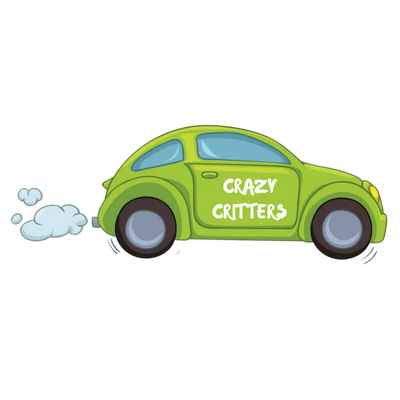
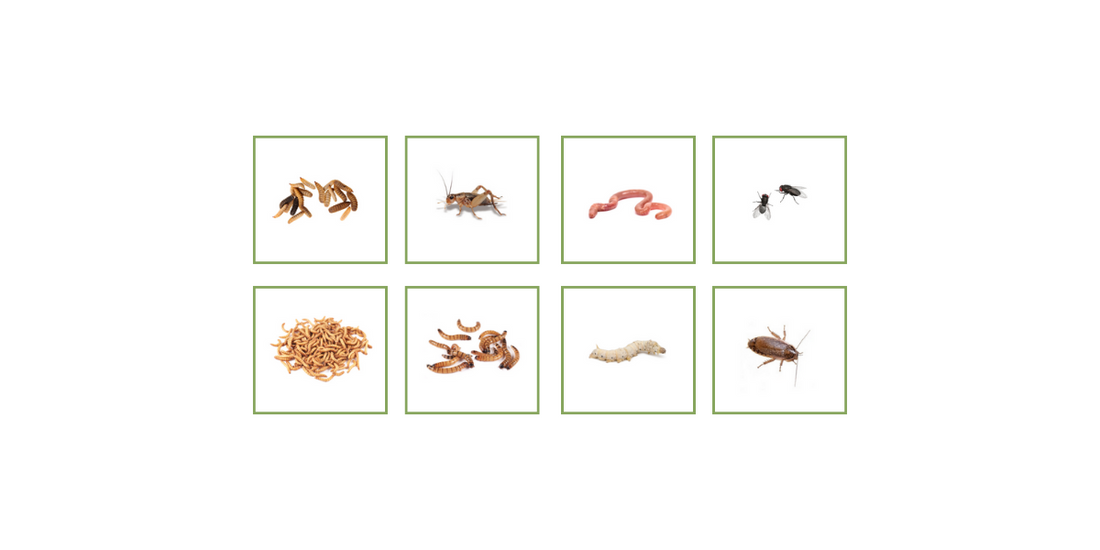
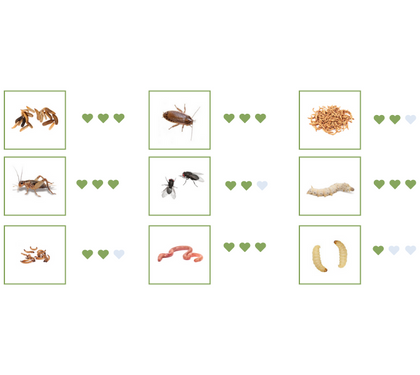
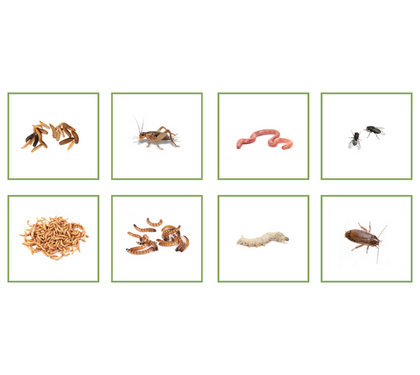
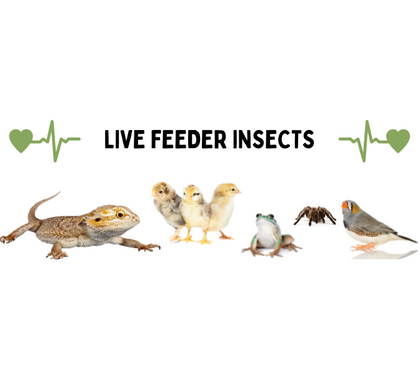
1 comment
Thank you for the amazing delivery time and lively attitude of our meal worms today. So much healthier and happy than the ones we routinely get from pet stores!!! We live in South Australia and the nearest supplier is a 4hr drive turnaround and the stock we get are average at best. The ones we received today are so clean & healthy. Our native blue wrens will be so happy that we will never run out again!!!
Would love you to give me a call to make sure I have rehoused the little critters correctly for longevity. Perhaps in my next order I won’t need to order a kilo.
Thank you for your great service
Cheers
Sophia